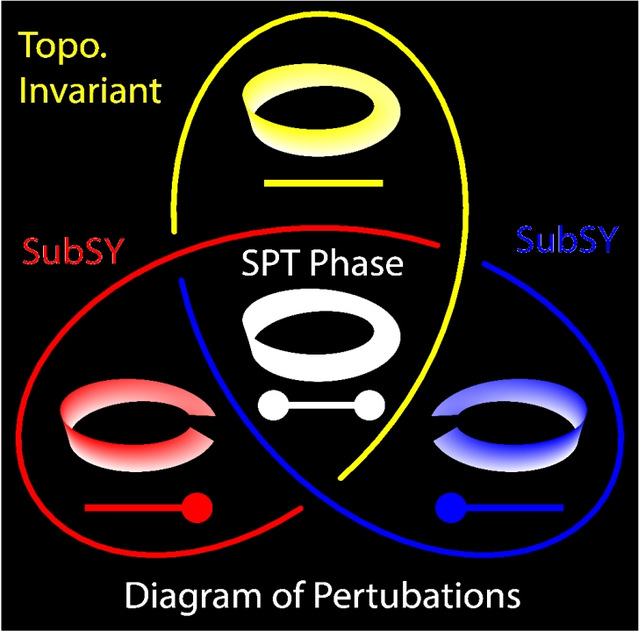Recently the research group led by professor Chen, Zhigang of NKU School of Physics and TEDA Institute of Applied Physics conducted a joint research with the research group led by professor Buljan of University of Zagreb in Croatia, challenging a traditional belief about symmetry protected states. They found that, without the quantized topological invariants and a certain overall symmetry of the system, the topological boundary states can still exist in the relevant sub-space and protected by the sub-symmetry. The research results are disclosed in a paper titled “Sub-Symmetry Protected Topological States” published by the top scientific journal Nature Physics, a sub-journal of Nature.

Fig 1: A classification diagram of the perturbations in an SPT phase. The yellow-line-encircled region indicates a set of perturbations which respect a particular symmetry and they do not disrupt the topological invariant (Topo. Invariant) in the system. The boundary states are protected by only the sub-symmetry (SubSy), and the red-line- and blue-line-encircled regions indicate two SubSy-preserving sets of perturbations which change the overall topological invariant but support the SubSy-protected boundary states; the overlap region represents the topological phase with the topological invariant and its associated boundary state.
By introducing and exploring the concept of sub-symmetry, the researchers found that the traditional global symmetry is not necessary for the protection of boundary states. The ingeniously designed and weak-light-written photonic lattice structure meets the criterion of various sub-space symmetries. The experiment demonstrated the SubSy-preserved topological state in one-dimensional Su–Schrieffer–Heeger (SSH) lattice and two-dimensional breathing kagome lattice (BKL) models. Furthermore, they made a ground-breaking move by introducing long-range hopping symmetry in the BKL, which solves the debate on the higher-order topological nature of the protected corner states.
The research not only challenges the traditional cognition of symmetry-preserved topological state, but also provides new thoughts on the research and application of topological states under various physical backgrounds. The result is hopeful to further promote the development of topological photonics and its frontier cross-cutting fields, as well as new generation of topological photonic devices.
The research is completed with NKU as the first affiliation, and NKU School of Physics doctoral student Wang Ziteng, Wang Xiangdong (the two students received the funding of a national innovation program to participate in the research as undergraduate students), Hu Zhichan and foreign post-doc fellow Bongiovanni as the co-first authors. Other collaborators include NKU professor Song Daohong and associate professor Tang Liqin and professor Morandotti at INRS-EMT. The research is funded by an NKU-led key R&D program of the Ministry of Science and Technology of the PRC and a key program of National Natural Science Foundation of China.
Link of the paper: https://www.nature.com/articles/s41567-023-02011-9



